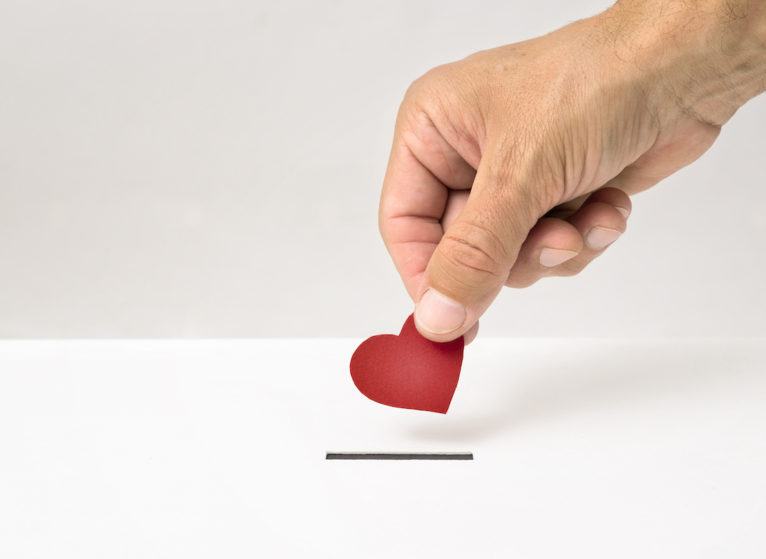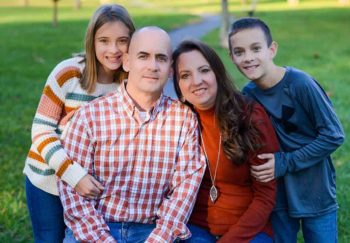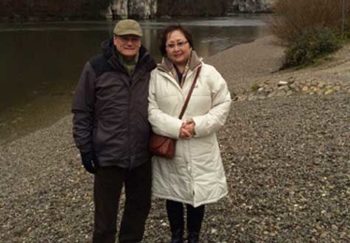Demand for lifesaving organs has always been greater than supply. And the number of people on the organ wait list is growing. More than 106,000 men, women, and children in the U.S. are waiting for an organ, according to the United Network for Organ Sharing (UNOS).
Most will wait a long time for the right organ. The average wait time for a patient to receive a kidney, for example, is 5-8 years. This long delay means people get sicker. Sadly, almost two dozen patients die each day waiting for a lifesaving organ.
Unless we see a surge in organ donors, we need new solutions to overcome the organ shortage and reduce the waiting period. UVA Health is working to find better ways to help patients get the organs they need.
Overcoming Barriers to Organ Donation
Not Enough Donors
Transplant medicine continues to evolve to help expand the pool of donated organs.
Expanding Eligibility
There’s a lot of misinformation out there about who can and cannot donate. Requirements have changed over the years. Today, there are a few factors that prevent you from donating your organs after you die.
People with diseases like HIV can now donate to others with the same condition. And we can also transplant organs from donors with certain types of infections, including hepatitis C and COVID-19. At UVA, we have been able to use more than 150 organs from donors infected with the hepatitis C virus. “We treat organ recipients with a course of highly effective hepatitis C therapy after transplant. This has resulted in a 100% cure rate for these patients so far,” says transplant nephrologist Alden Doyle, MD.
Due to the large number of patients who died with or because of COVID-19, doctors worked quickly to ensure those organs did not go to waste. “We have helped advance the safe use of organs from some COVID-positive donors for select recipients who have immunity,” says Doyle.
Advanced age and some chronic medical conditions like high blood pressure are no longer automatic disqualifiers. Transplant teams assess every donor to determine whether they’re healthy. They also see which organs are suitable to donate. Organs like the heart or kidneys may show signs of age or disease. But you could still donate another organ, such as your liver, tissue, or corneas.
Not Enough Usable Organs
Doctors and researchers have found ways to make the most of every donated organ. They’ve even discovered techniques that allow them to use organs that they would have discarded in the past.
Split-Liver Transplant
The liver is the only organ in the body that can grow back. This means a living donor can donate part of their healthy liver. It also means that surgeons can split a liver from a deceased donor. Then they can transplant it into two different people. Most often, a larger part of the liver goes to an adult and a smaller section goes to a child. Both pieces of the liver will grow and function normally.
Domino Liver Transplant
Recent research shows livers from children with inherited metabolic diseases like maple syrup urine disease (MSUD) can be transplanted into people with other types of liver diseases. That means these kids can be both liver recipient (getting an organ from a deceased donor) and liver donor. It also means no more waste of what we now know is a usable organ.
“Replacing the liver improves the child’s condition and their quality of life,” says transplant surgeon Nicolas Goldaracena, MD. “And if we give their liver to someone else, it acts like a normal, perfect organ. That recipient will not suffer from the same metabolic disease.”
Dual Kidney Transplant
A majority of patients on the organ wait list need a kidney. At UVA Health, surgeons use two novel transplant procedures to help more patients have access to these lifesaving organs.
Two-for-One Kidney Transplant: Kidneys often decline with age. A kidney donated from someone older or unhealthy may be too worn or overused to function well. But if surgeons transplant both kidneys as a pair, they work better.
“Together, these kidneys can provide someone several years of healthy function,” says Doyle. “This option gives someone on dialysis a chance to live who would have to wait years for a single, younger kidney.”
Transplanting Tiny Kidneys: Few hospitals will transplant infant kidneys. They are too small and the procedure is too complex. But UVA Health uses the “en-bloc” approach to make these tiny kidneys work for adults or kids.
“Instead of transplanting a single kidney, we keep both of the kidneys attached to the aorta and vena cava [the primary artery and vein moving blood through the body]. Then we attach the entire ‘tree’ — the two kidneys, the aorta, and vena cava — onto the recipient,” says Doyle. “The transplanted kidneys are both healthy, and they will grow over time.”
Waiting for the Perfect Match
It’s true that not any organ will do. A lifesaving organ has to be a good match for the recipient. That means finding a donor with the same blood and tissue type. This helps prevent organ rejection and ensures the best outcome. But according to Goldaracena: “If you’re waiting for the perfect organ, it might never come.”
Fortunately, organ compatibility is less of a concern than it once was. We have medication that can prepare the recipient’s body to receive the “mismatched” donor organ. Advances in the transplant process also help expand the pool of available organs. This makes finding a match more likely.
Paired Donor Exchange
Many family members and friends are willing to donate a kidney to someone they love. But often, this willing donor is not a good match for the recipient. The solution is paired donor exchange.
“Paired exchange allows you to donate a kidney to someone in need who is compatible with you. Your loved one will then receive a kidney from a different person who is compatible with them,” says Living Donor Transplant Nurse Practitioner and Coordinator Anita Sites, MSN, RN.
This can be an exchange between 2 donors and 2 recipients, or many pairs of patients all over the country. The largest transplant chain so far: 35 donors and 35 recipients. “It’s important because it opens up more avenues for transplant that would not be possible otherwise,” adds Sites.
Preserving the Quality of Lifesaving Organs
The organ transplant process is long and complex. There are many pieces of the puzzle. There are also a lot of variables that must align at the right time and place to ensure a successful outcome. One key part of the process is keeping organs in the best possible condition as they’re taken from the donor to the recipient. Thanks to advances in technology, transplant surgeons have more control of organ quality during transport.
Want to Save a Life?
Sign up today to be an organ donor.
Keeping Lungs Alive
Lungs are especially fragile. UVA Health uses the TransMedics™ Organ Care System to transport donated lungs. This portable device monitors and preserves lungs in a controlled environment. It flushes the lungs with warm blood and gives them oxygen, so they stay alive during transport. This means they can travel farther than the standard 6 hours. By the time the lungs make it into the patient, they are warm, functioning, and healthy.
Keeping Hearts Cool
Putting hearts on ice during transport is standard practice. But now, the UVA heart transplant team uses a more high-tech method to keep hearts the right temperature. The device includes a Bluetooth device that travels with the donated heart, allowing the team to track the temperature with an app.
“This device will provide some consistency in the preservation process and may increase the heart’s ability to travel longer distances,” says cardiac surgeon Leora Yarboro, MD. So for someone in Virginia waiting for the right heart to become available, a lifesaving organ available in Texas may now be a viable option.


